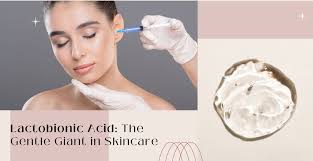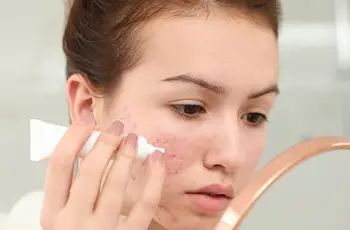
Lactobionic Acid: The Ultra-Gentle Exfoliant Your Sensitive Skin Will Love
When it comes to exfoliating, many people face a tough tradeoff between removing dull dead skin and avoiding the irritation that harsh acids or scrubs can cause.
If your skin turns red or stings at the slightest use of traditional acids, you’re not alone—and there’s good news: not all exfoliants are created equal.
Lactobionic acid is emerging as a skin care hero for sensitive, dry, or easily irritated complexions thanks to its unique ability to exfoliate and hydrate at the same time.
It belongs to a group of ingredients called polyhydroxy acids (PHAs), a family that offers similar benefits to alpha hydroxy acids (AHAs) but in a gentler, more skin-friendly form.
This makes lactobionic acid an excellent choice for people who have struggled with glycolic, lactic, or salicylic acid due to their tendency to cause redness, burning, or flaking.
According to dermatologists, it’s one of the few ingredients that both exfoliates and supports skin barrier function, reducing the risk of irritation while promoting healthier skin.
What Is Lactobionic Acid?
Lactobionic acid is a polyhydroxy acid derived from lactose, a sugar found in milk, and it’s structurally larger than most AHAs, which makes it absorb into the skin more slowly.
That larger molecular size is exactly why it causes less irritation—it doesn’t penetrate as deeply, so it exfoliates on the surface without triggering inflammation or sensitivity.
Dr. Hannah Kopelman, a board-certified dermatologist in NYC, praises lactobionic acid for its ability to provide visible results while being gentle enough for almost any skin type.
“It works by loosening the bonds between dead skin cells, helping promote cell turnover while maintaining hydration,” says Dr. Kopelman.
Dr. Karyn Grossman, a board-certified dermatologist and cosmetic surgeon, highlights lactobionic acid’s ability to act as a humectant, drawing water into the skin to keep it moisturized.
The Top Benefits of Lactobionic Acid
Lactobionic acid isn’t just another exfoliant—it offers a host of benefits that make it a multifunctional skincare ingredient you may want to add to your daily routine.
1. Gentle but effective exfoliation: It removes dead skin cells from the surface, smoothing skin texture without the stinging or burning that harsher acids often cause.
Because of its gentle nature, it’s ideal for people with rosacea, eczema, or reactive skin who typically can’t tolerate stronger exfoliants like glycolic acid.
2. Hydration boost: This acid acts as a humectant, helping the skin retain water and improve hydration levels, which is especially useful for dry or dehydrated complexions.
Dr. Grossman explains, “It draws moisture into the skin, which helps reduce dryness and strengthens the skin’s protective barrier at the same time.”
3. Antioxidant protection: Lactobionic acid is also an antioxidant, meaning it helps neutralize free radicals, which are unstable molecules that can lead to premature aging.
These antioxidant properties help fight oxidative stress from pollution, UV rays, and other environmental factors that weaken and age the skin over time.
4. Supports the skin barrier: Unlike harsher exfoliants that can disrupt the skin’s natural defenses, lactobionic acid helps maintain and even strengthen the skin barrier.
This makes it a great option for those dealing with sensitivity, inflammation, or skin conditions that compromise the barrier, such as atopic dermatitis.
5. Softens fine lines: By promoting cell turnover and boosting hydration, lactobionic acid can help soften the appearance of fine lines and wrinkles over time.
As your skin becomes smoother and more hydrated, it reflects light better, which helps give that radiant, plump, and youthful glow we all seek.
Who Should Use Lactobionic Acid?
Lactobionic acid is suitable for a wide variety of skin types, but it’s especially beneficial for people with sensitive, dry, or easily irritated skin who need a more forgiving exfoliant.
If you’ve ever had a bad experience with AHAs or BHAs, switching to a PHA like lactobionic acid may allow you to enjoy exfoliation without inflammation or peeling.
Dr. Kopelman says, “Even those who can’t tolerate acids like glycolic or salicylic usually do well with lactobionic acid—it’s that gentle and skin-friendly.”
It’s also a great entry-level acid for those new to exfoliating, since it carries minimal risk of irritation and helps the skin adjust more gradually.
Those with dry or dehydrated skin benefit from lactobionic acid’s water-binding properties, which help maintain long-lasting hydration throughout the day or night.
However, if you have a lactose or milk allergy, speak with a dermatologist before trying lactobionic acid, as it’s derived from milk sugars and may cause reactions in rare cases.
How to Use Lactobionic Acid in Your Routine
Even though lactobionic acid is gentle, proper use is important to get the best results while protecting your skin from unnecessary sensitivity or damage.
Start slowly: Dr. Grossman recommends using lactobionic acid 2–3 times per week initially to allow your skin to build tolerance before moving to every other day or daily use.
This gradual introduction reduces the likelihood of irritation and lets you monitor your skin’s response to the new ingredient.
Use at night: Because exfoliants can increase sensitivity to sunlight, dermatologists recommend applying lactobionic acid in the evening as part of your nighttime skincare routine.
This gives the ingredient time to work without competing with environmental aggressors like UV rays and pollution.
Hydrate afterward: Follow lactobionic acid with a gentle, hydrating moisturizer to lock in moisture and support the skin barrier, especially if your skin tends to feel tight or dry.
Dr. Kopelman emphasizes, “Using a moisturizer helps seal in hydration and keeps your skin feeling supple, not stripped or irritated.”
Always wear SPF: Even though lactobionic acid is mild, it can still make your skin more susceptible to sun damage, so daily sunscreen is non-negotiable.
Choose a broad-spectrum SPF 30 or higher, and apply it every morning—even on cloudy days—to prevent UV-induced aging and protect your skin barrier.
Avoid combining with other strong actives: Don’t pair lactobionic acid with retinoids or other acids unless recommended by a dermatologist to avoid over-exfoliating your skin.
Dr. Grossman says, “People with oily skin may eventually tolerate both in one routine, but this should be introduced slowly and with caution.”
Patch test before use: If you’re unsure how your skin will react, apply a small amount to a discreet area and monitor for any signs of irritation before applying it to your entire face.
This is especially important for those with very reactive or allergy-prone skin, as even mild ingredients can occasionally cause unexpected responses.
Final Thoughts: Should You Try Lactobionic Acid?
If you’re someone who wants to exfoliate but hates the burning, tingling, or peeling that often comes with stronger acids, lactobionic acid could be a perfect fit.
It exfoliates gently, hydrates deeply, supports the skin barrier, and even fights signs of aging—all with a low risk of redness, irritation, or inflammation.
Dr. Kopelman concludes, “Lactobionic acid is an ideal option for those looking to gently improve texture, boost glow, and support overall skin health—without irritation.”
Because it works on the surface of the skin without disrupting the deeper layers, it’s safe for most skin types, including those who thought exfoliation wasn’t for them.
If your skincare goals include glowing, hydrated, and smoother skin, this multitasking acid may be the underrated ingredient your routine has been missing.
As always, consult with your dermatologist before adding new ingredients, especially if you have known sensitivities, underlying skin conditions, or allergies.
Lactobionic acid proves that exfoliation doesn’t have to hurt—sometimes, the most gentle solutions can deliver the most beautiful results.


